| HOME | PROTECTION | NATURE | PLAN YOUR VISIT | FAQ | JOIN/DONATE | ABOUT |
| For more about old-growth forests go to Wandering Thoughts in an Old-Growth Forest. |
| Protecting old-growth Douglas-fir forests |
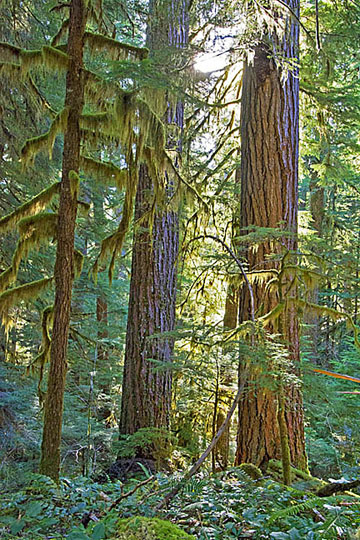 |
The vast conifer forests of the Pacific Northwest have mostly been logged –so heavily that there are only scattered small fragments of ancient ("old-growth") forest left. Some of the finest of the remaining old-growth forests are within the proposed national monument. Stands of Douglas-fir around 1,000 years of age can be found in and around the Middle Santiam Wilderness, in Crabtree Valley, and in Millennium Grove near Gordon Meadows. Definitions of old growth vary, but it is usually characterized as having trees in a wide range of sizes, a deep canopy with many layers, presence of at least some very large trees, numerous standing snags, a profusion of logs and other coarse woody debris on the forest floor. Fallen logs in streams and shaded cold water are important components of habitat for trout and salmon. Stands of old-growth in the Western Cascades are often surrounded by larger areas of cut-over forest converted to monoculture, plantations of varying ages. If left alone, or in some cases actively managed using ecological restoration forestry, these plantation stands can begin to acquire the characteristics of old growth. |
This one-log truck is a relic of past reckless logging practices. Few, if any existing mills are capable of handling such logs; unfortunately, few such large trees still stand in the forest. The inspiration for the proposed Douglas-Fir National Monument comes from the need to give permanent protection to and honor those few remaining large, old growth trees.
|
|
 |
Old-growth forests need protection wherever they are found, and regardless of size. These forests, in turn protect us and other life forms in numerous ways. They safely store carbon in the soil and vegetation in this time of global warming. They provide clean water, offer suitable habitat for animals and plants, provide a reservoir of genetic diversity, and offer superb opportunities for outdoor recreation, scientific study and spiritual renewal. |
| Below are some important features of old growth: downed logs (often called nurse logs), standing snags (important for insects and woodpeckers) and mossy stumps, home to an abundance of tiny organisms. It has been estimated that a typical cubic foot of ancient forest soil contains on the order of ten thousand organisms. |
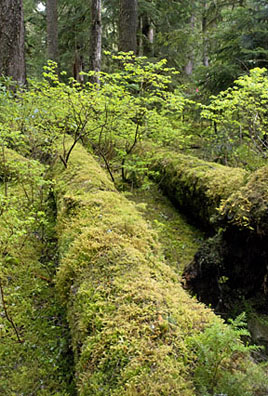 |
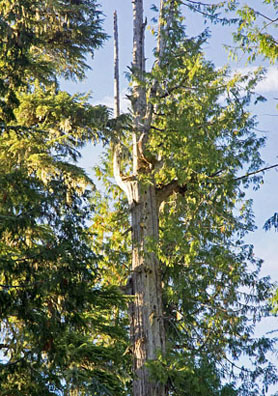 |
 |
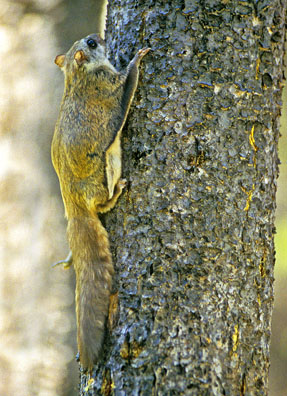 |
On the left is a northern flying squirrel, a primary prey species of the northern spotted owl. Northern spotted owls are dependent on old-growth forest; it is even more important to preserve this habitat now that their habitat is being invaded by the exotic barred owl. |
 |
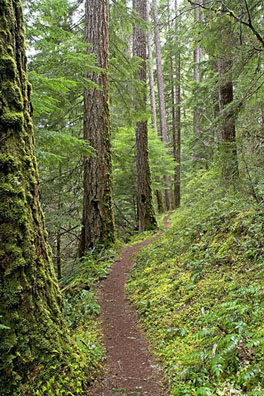 |
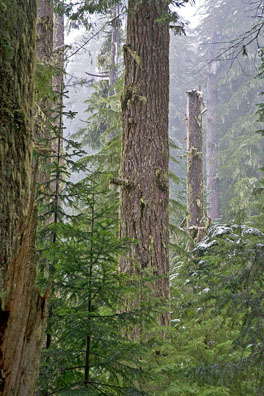 |
Ancient conifer forests provide a sanctuary and outdoor experience for people that cannot be found anywhere else. |
| For more about old-growth forests go to Wandering Thoughts in an Old-Growth Forest. |
| return to Protection Page | return to Nature Page |